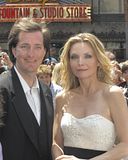carter1971 wrote:Now scroll to the bottom of that thread and read Luke's reply. Luke said the same things in his review of the MWE of Robin Hood. Like it or not, there are two sides to this, and neither has yet to be proven right or wrong. As Luke said, the best solution is for Disney to offer both.
Having said that, after reading the thread and looking at TonyWDA's pics, I actually do believe that I prefer the matted ones. I think I'm even going to buy the MWE of Robin Hood now and check it out.
However, I still have two questions that no one has addressed:
1) Why did the animators bother to fill the entire frame if they knew it would be cut off? This would be a waste of time. As I have stated before, it is probably because some older facilities showed films in 1.33:1 into the 1970's. Changes in the exhibition side of the film industry happen over a period of years, because they're very expensive. There are still numerous theatres out there without digital sound, for example. The majority of theatres still use 35mm projectors as well, and many will continue to do so until they close. But as I said, this is only my theory as to why they did it. If someone else has a solid explanation or another theory, then please present it. I am really curious about this.
2) The proper aspect ratio for matted films is 1.85:1, not 1.75:1. Has this changed over the years? Not likely, as it would require changes to theatre equipment.
Any response to these questions would be appreciated.
As i mentioned in my post above when the chinese theatre hosted the world premiere for the jungle book back in 1967 it was presented in a flat widescreen aspect ratio 1:75:1, and it was subsequently played durring its entire run in the theatre is the flat aspect ratio format.
it might have been animated open matte but it was not intended to be viewed that way.
the reason why they would animate it this way is because, it wasnt as expensive to do so, it had nothing to do with time.
as for your question about 1:85:1 opposed to 1:75:1 it really wouldnt require changes to equipment just a simple adjustment of the masking, its not the same as switching over from scope to flat which incidently every 35 mm projector currently in use can do, in fact some theatres will show scope movie trailers before a flat movie or along with flat trailers, cue tape read by the projector can trigger the cues in the projector to adjust the lens and masking durring the presentation to make this possible. in older style projectors this can be acomplished manually
durring the tour i give of the chinese theatre we have a short 5 min featurette on the theatre we show which is in the 1:75:1 format and the masking adjusts slightly for this durring its presentation then adjusts back for the feature film when it begins for the movie patrons.
and heck our double a norelco at the chinese can show movies in 35 mm in both scope and flat and also present movies in 70 mm and that projector is nearly 60 years old
also every theatre in the country still uses 35 mm projectors, even when presenting a movie in DLP, theatres (if they are not stupid)run a back up 35 mm print in sync with a DLP presentation incase any bugs or glitches pop up durring the presentation so they can switch over imeadiately to the film with little interuption to the audience.
95 percent of the films in the country are still shown via film only about 5 percent are digitally presented.






